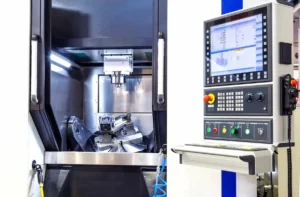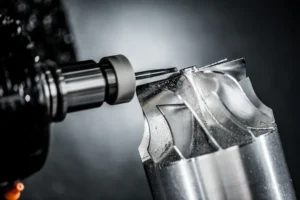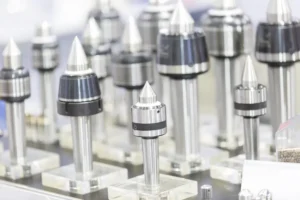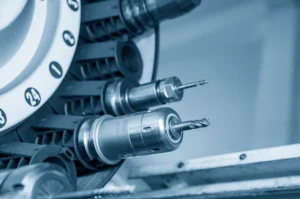
CNC is one of the main breakthroughs in modern technology that had a major impact on industry and manufacturing. As manufacturers are increasingly adopting CNC capabilities and transforming their processes, not only does it empower worldwide industrial sectors, this development essentially raises the expectations and standards of industrial demand in several sectors. The different industries that have long relied on the supply of quality parts and components for their products will come to rely on CNC technology as well for its reliable quality, precision, and efficiency compared to other industrial methods.
As of today, many more manufacturers rely exclusively on CNC technology. In many ways, CNC machining is an industry-standard by now, for most manufacturers. As these techniques develop exponentially during the next few years, they will produce many more tools and capabilities. Even today, CNC technology offers a wide variety of tools and machinery, and the main advantage of CNC machining is the customizability of standard CNC machines to perform several processes with the help of machine tools. From drilling and turning to facing, milling, and other machining operations, CNC tools offer an incredible variety, yet require a certain level of familiarity with the features of each machine tool to determine the most optimal configurations.
Table of Contents
What are CNC Machine Tools
CNC machines are equipped and programmed to perform several industrial operations. Some recent models can even perform several operations of a single long manufacturing process, to produce a final part. To perform these tasks, CNC machines are designed to be able to machine in several ways, requiring a particular configuration, using several types of cutting or machining tools. These tools can make cuts or remove material from the workpiece, as programmed.
CNC machines, depending on the manufacturer and the configuration, are equipped with several tool heads enabling them to perform several operations. The tool changer, integrated into the CNC machine, usually equips the different tools. These tools come in a wide variety, enabling several processes. Some tool heads are particular to some operations, for example, drilling tools and facing tools, but other tools exist that can cater to multiple operations. These tools can machine several materials, yet are mostly used for metals and other solid materials for heavy industrial use. These tools are now a defining feature in most of the industry and as such offer a wide variety.
Types of CNC Machine Tools

There are several types of CNC machine tools. These tools are used to perform several industrial operations. As such, the main differentiator between the several machine tools is the basic industrial process they can perform. CNC machine tools can vary from different types of cutters to drilling bits. Several tools can be used with a CNC milling machine, as these are the main types of CNC machines that rely on cutting tools.
These tools can also differ in terms of material. Carbon steel and cemented carbides, as well as silicon carbides, are the most common. However, there are several factors determining the particular machine tool as well as the material of fabrication. Workpieces made from more solid materials are usually machined with parts made from equally solid materials. Temperature also affects the machine tool material. Although there is a wide range of CNC machine tools, they can be structured according to their most basic operation and material. It’s also interesting to note that as the industry itself develops, CNC machines and tools are also upgraded with new features and capabilities.
Milling Tools

There are several milling tools, each with particular uses and capabilities. Some are quite versatile and able to work in many processes by a milling machine. The most common milling tool is the end mill. It can make cuts along an axis, which makes it similar to drills. Flat-end mills are mostly used for general features. More complex shapes and features require a ball-nose end mill, able to cut 3D features and circular geometries, or a bull-nose end mill for more precise refining and filleting. Similarly, roughing end mills operate on the same principle but require a longer period. This is due to the increased accuracy and precision of roughing end mills, as they are mostly used to make precise cuts in the workpiece, leaving a rough finish on the workpiece.
Hollow mills operate as the inverse of an end mill. This CNC tool is pipe-shaped and is used mainly to create radii with precision. One of its particularities is that the workpiece is fed into its inner cavities, where the cutting tool is located. Face mills on the other hand can only cut horizontally. They are still relied on because they are equipped with replaceable cutting inserts, which significantly affects the quality of the cutting. The flathead and cutting edges characterize face mills, which makes them very useful in making true horizontal cuts and sections, and even surfaces.
Cutting Tools
Cutting tools also come in a wide variety. As some are more common than others, many CNC cutting tools are now compatible with several processes. Some of the more common types are for example ball cutters, which can be recognized by their spherical shape. As such, they are mostly used to maintain a precise corner radius. This tool is quite different from side and face cutters, which are used mainly to make slots and grooves. Because the cutting blade of side and face cutters is located on the circumference, this particular tool can operate similarly to an end mill.
Possibly the most affordable type of CNC cutting tool is the fly cutter. This tool is less expensive than others. It consists of a central body holding a tool bit, operating similarly to a face mill. The most customizable tool however is the involute gear cutter, which is usually made in-house by the machinist using a hobbing machine. The involute gear cutter can hold several cutting blades, depending on the workpiece, and the desired part. Woodruff cutters are also commonly used. They are precise and are used mainly for productions requiring accurate measurements, or small-sized parts and components.
Drill Bits and Turning Tools

As CNC machines can perform several manufacturing operations, some tool bits are specific to some types of CNC machines. Turning machines and lathes often have this peculiarity, although this configuration shares some similar tasks that can also be performed by some configurations in CNC mills. For example, drill bits can be in several varieties and are used to make holes. Depending on the particular drill bit, this tool can mark a spot for a hole to be drilled with a different, and also make deep holes in the workpiece. Twist drills can make medium-sized holes in the workpiece, whereas center drills can only mark precise spots for drilling. Deeper holes in a matter-consistent workpiece require an ejector drill.
Turning tools are a more specialized category of CNC machine tools. They are designed to perform several operations that are mostly categorized in the lathing and turning processes. These are often referred to as tool bits or cutting tools. Some drills are mostly used in specific operations like reamers, which are mostly used with the reaming process (creating holes of specific diameters with a specific depth).
Machine Tool Material
CNC machine tools are generally created from specific solid materials. The type of usage, the workpiece material as well as the particular machining processes are largely determined by the CNC machine tool material. As CNC machines are designed to work with several materials, both solid and brittle, so are CNC machine tools.
High-speed steel is by far the most reliable material in CNC operations. It can resist high temperatures and works perfectly with extremely solid materials. Tools made from high-speed steel can also withstand high-speed mills. This material costs more than other varieties like carbon steel. The latter, although it can withstand some high-speed machines, it is reserved for brittle materials as it is less solid than high-speed steel.
Other materials too can be used to create CNC machine tools. Cemented carbides, for example, are more solid than high-speed steel, they are mostly used in finishing and refining operations. Cutting ceramics are also stronger than most steel types, but are susceptible to crack, similarly to carbides.
Selecting The Right Tools

Choosing the right tools is determined by several variables. The specific details of the desired industrial use will largely determine this. Some specific aspects of the tools should also be considered. For example, workpiece material and the type of CNC machine can determine tool hardness.
This also applies to the speed of the machine. Some tools are more appropriate for specific speed ranges. Another element that is increasingly considered by manufacturers is the duration of the use. The reason cutting ceramics and carbide tools are considered cost-effective are because they are optimal for short-term work.
Conclusion
At Xin Tian Jan, we provide a wide variety of machining services, compatible with several processes and manufacturing operations. Our team of high-skilled engineers and professionals has a long expertise in working with a diverse range of CNC machines and tools. We are versatile and proficient in several types of industrial methods and can determine the most optimal processes and tools needed to produce any type of product.
